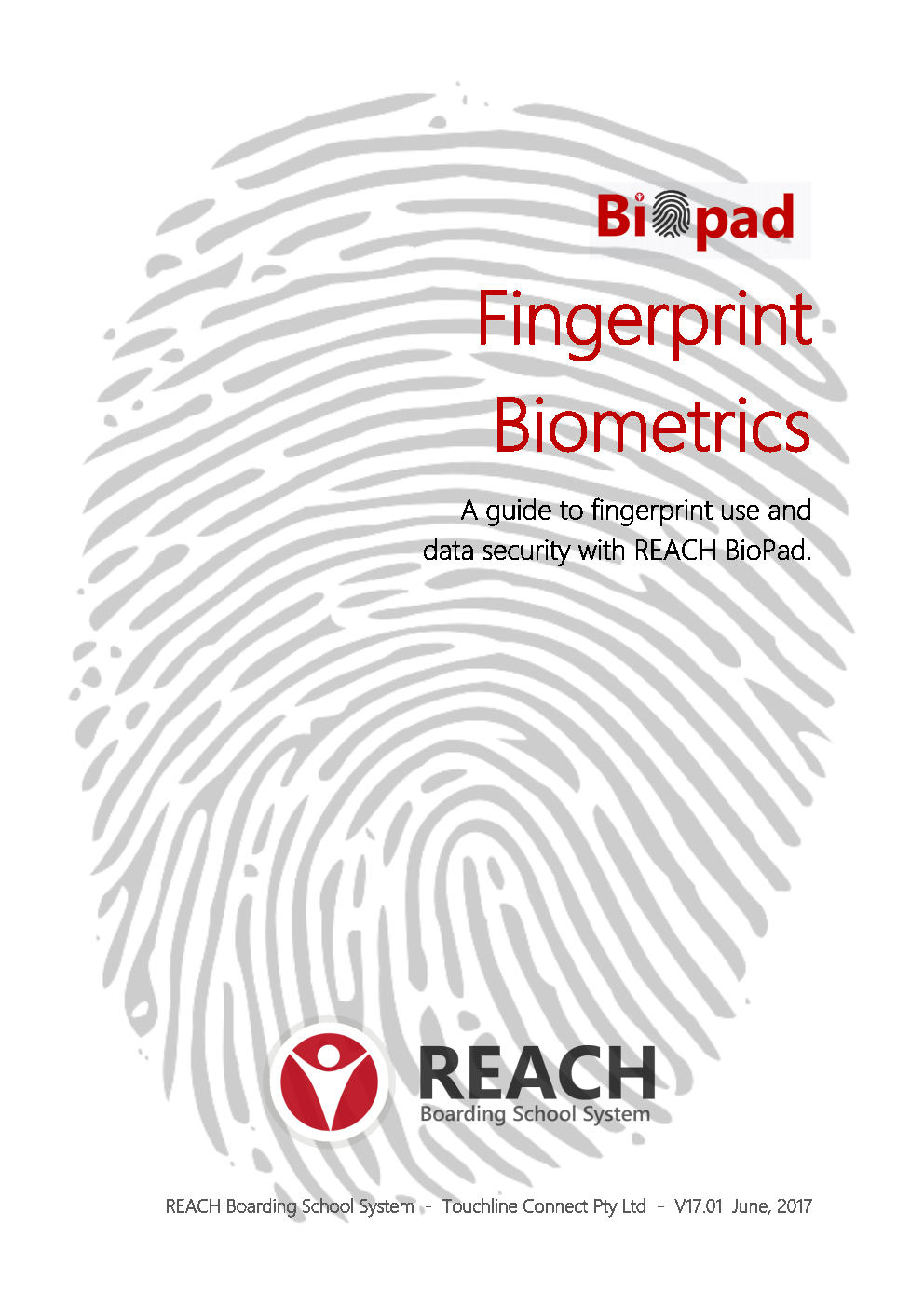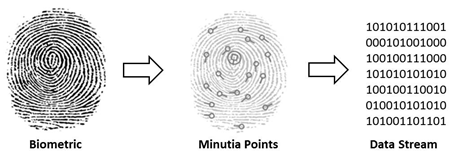About Biometrics
How we record Biometric information
REACH BioPad captures images and measurements of fingerprints to extract unique biometric data. It uses a complex set of algorithms to identify and apply unique minutiae measurements into an encrypted binary number template.
An important distinction in the procedure for fingerprint data management using REACH is that an image of the fingerprint is never stored by the REACH BioPad or the REACH Boarding School System itself.
An encrypted binary template (i.e. measurements taking from the fingerprints captured) is created and used to establish the characteristic for each unique identity and this is verified when replica binary prints are identified. Importantly, this encrypted binary template is only usable in the REACH system.
How REACH BioPad differs from law enforcement fingerprinting
There are several significant differences between finger printing law enforcement applications and finger scanning identification methods that are used by the REACH BioPad.
Finger printing in the law enforcement context captures and stores rolled images of fingers. Rolled images capture unique identifying points on the entire finger surface in order to collect the maximum number of unique identifying points. Finger scanning uses flat images of a fingerprint to create binary templates. Flat images reveal the centre of the finger and require only a minimum of unique identifying points in order to generate a digital interpretation and no fingerprint images are ever stored. The purpose of the REACH BioPad scanning process is to identify and recognise a person that is already enrolled in the software.
No Fingerprints are Saved
An important distinction in the procedure for fingerprint data management using REACH is that an image of the fingerprint is never stored by the REACH BioPad or the REACH Boarding School System itself.


